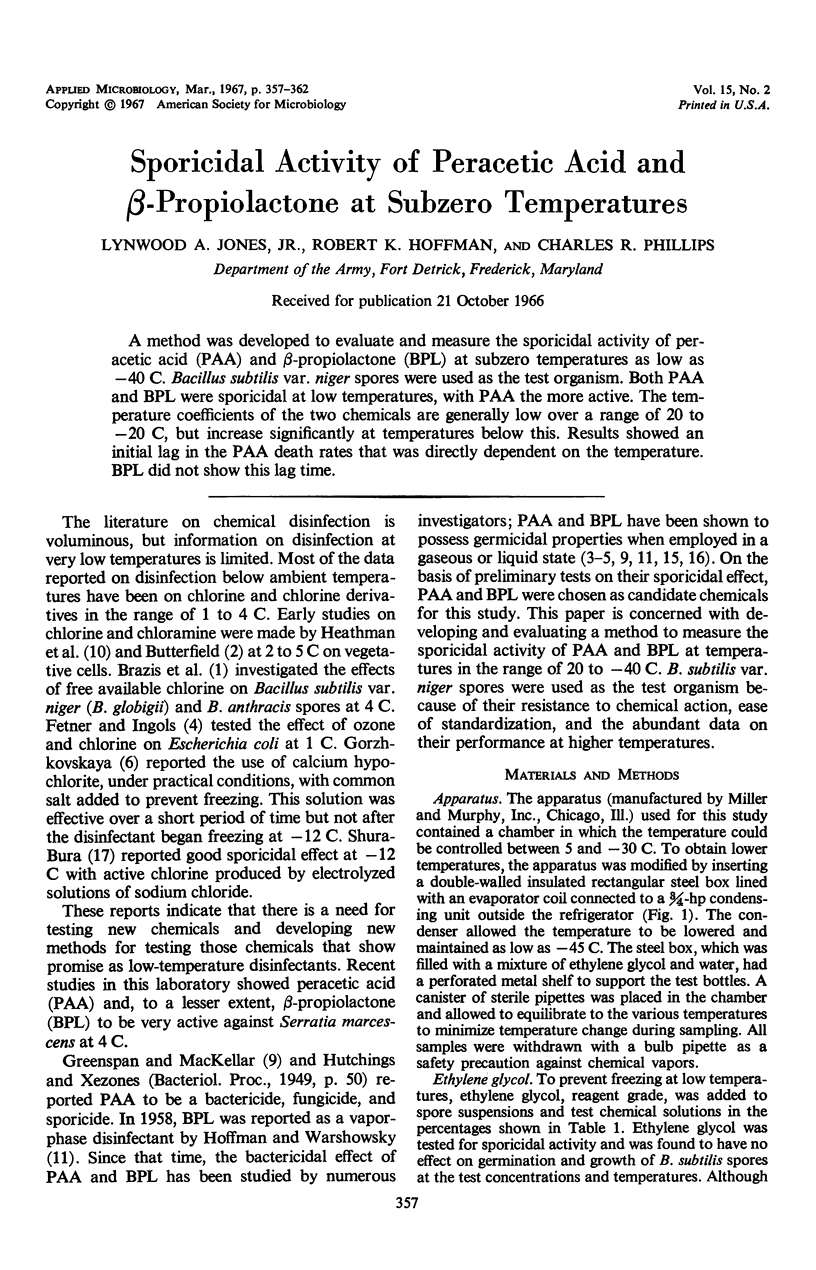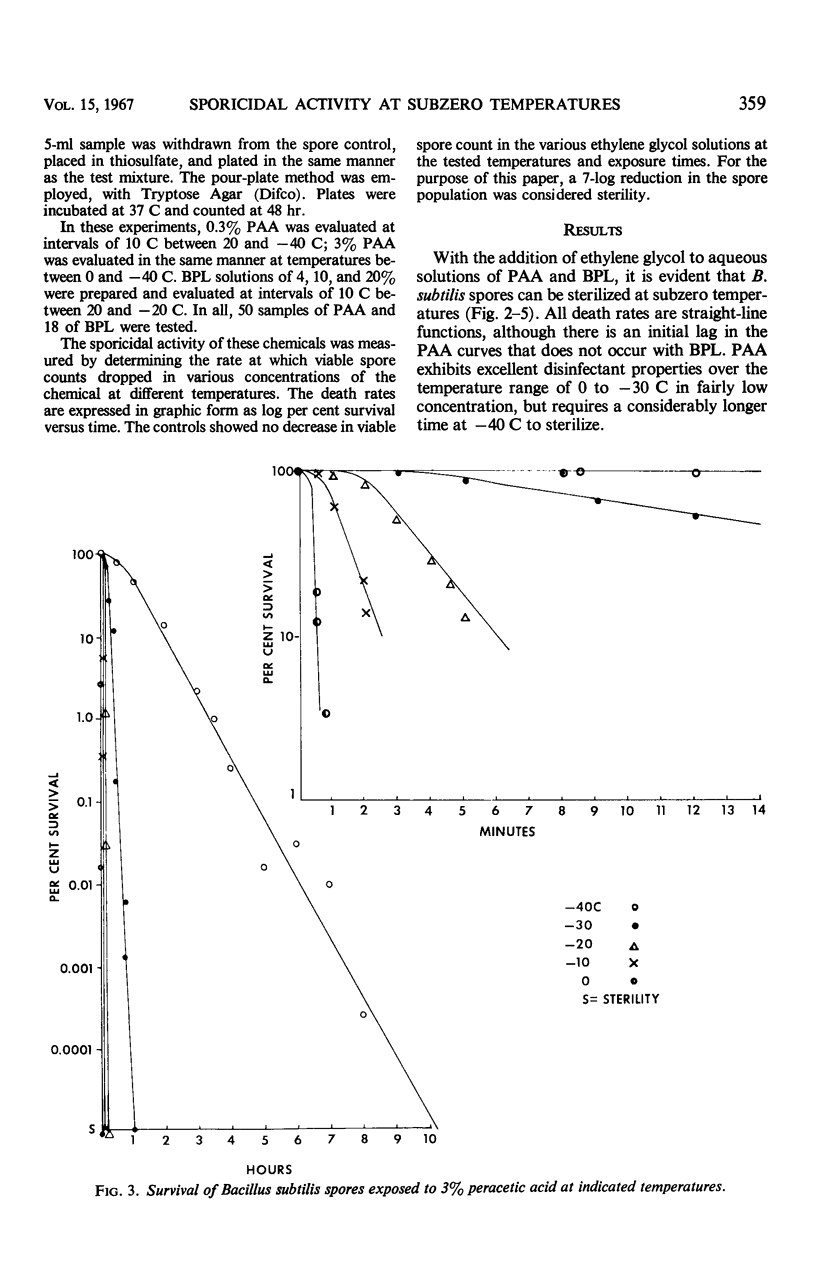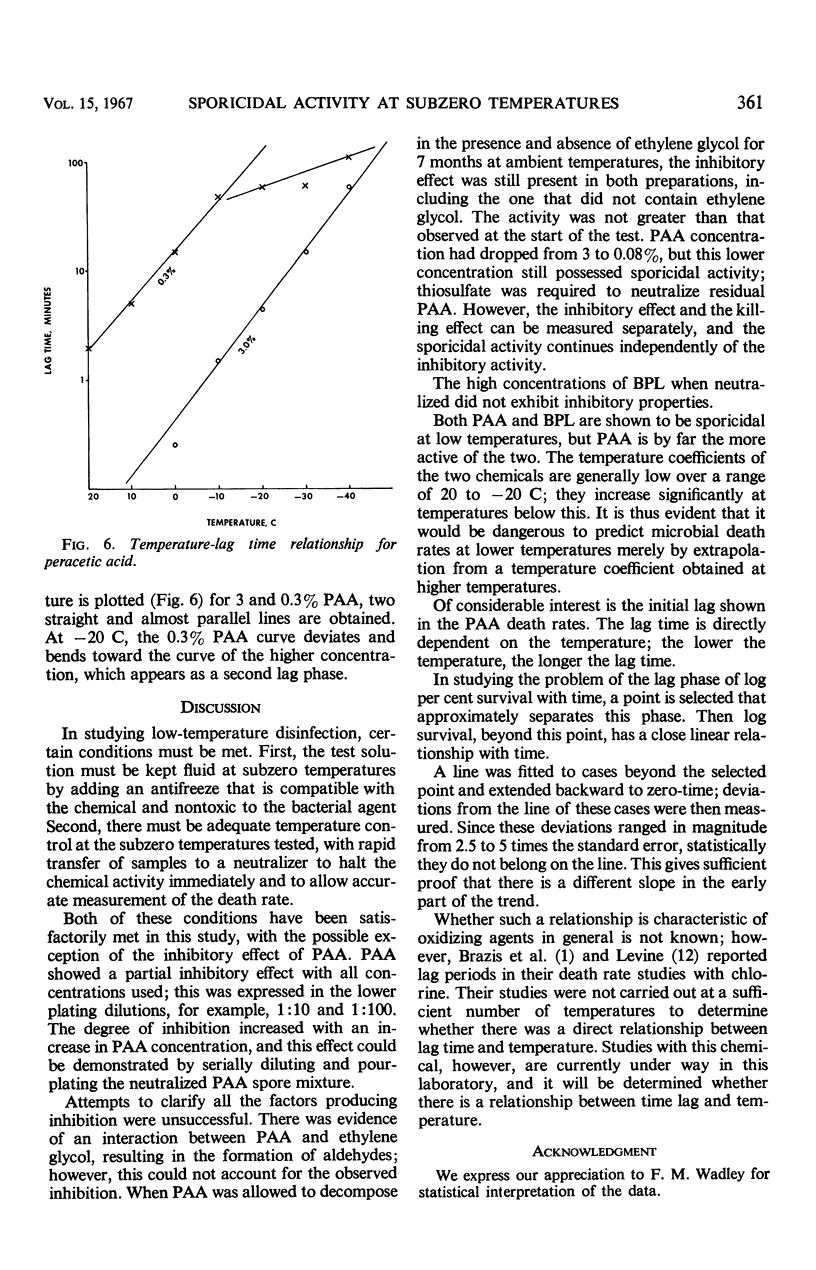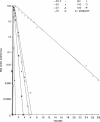Abstract
A method was developed to evaluate and measure the sporicidal activity of peracetic acid (PAA) and β-propiolactone (BPL) at subzero temperatures as low as -40 C. Bacillus subtilis var. niger spores were used as the test organism. Both PAA and BPL were sporicidal at low temperatures, with PAA the more active. The temperature coefficients of the two chemicals are generally low over a range of 20 to -20 C, but increase significantly at temperatures below this. Results showed an initial lag in the PAA death rates that was directly dependent on the temperature. BPL did not show this lag time.
Full text
PDF





Images in this article
Selected References
These references are in PubMed. This may not be the complete list of references from this article.
- BRAZIS A. R., LESLIE J. E., KABLER P. W., WOODWARD R. L. The inactivation of spores of Bacillus globigii and Bacillus anthracis by free available chlorine. Appl Microbiol. 1958 Sep;6(5):338–342. doi: 10.1128/am.6.5.338-342.1958. [DOI] [PMC free article] [PubMed] [Google Scholar]
- GERSHENFELD L., DAVIS D. E. The effect of peracetic acid on some thermoaciduric bacteria. Am J Pharm Sci Support Public Health. 1952 Oct;124(10):337–342. [PubMed] [Google Scholar]
- HOFFMAN R. K., WARSHOWSKY B. Betapropiolactone vapor as a disinfectant. Appl Microbiol. 1958 Sep;6(5):358–362. doi: 10.1128/am.6.5.358-362.1958. [DOI] [PMC free article] [PubMed] [Google Scholar]
- MERKA V., SITA F., ZIKES V. PERFORMIC AND PERPROPIONIC ACIDS AS DISINFECTANTS IN COMPARISON WITH PERACETIC ACID. J Hyg Epidemiol Microbiol Immunol. 1965;9:220–226. [PubMed] [Google Scholar]
- NASH T. The bactericdal properties of compounds which protect living cells against freezing damage. J Hyg (Lond) 1962 Sep;60:353–358. doi: 10.1017/s0022172400020465. [DOI] [PMC free article] [PubMed] [Google Scholar]
- SHURA-BURA B. L. Primenenie produktov elektroliza khloridov v kachestve novogo sporotsidnogo serdstva. Zh Mikrobiol Epidemiol Immunobiol. 1959 Jun;30(6):58–62. [PubMed] [Google Scholar]





